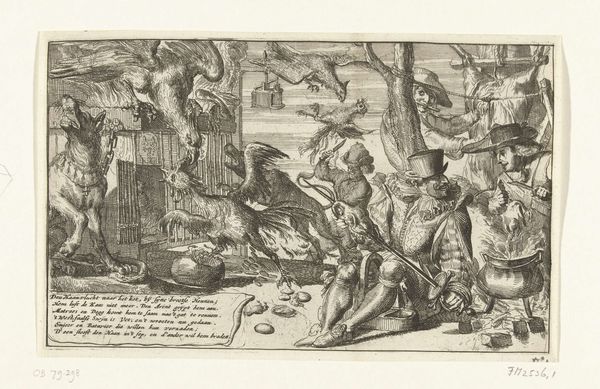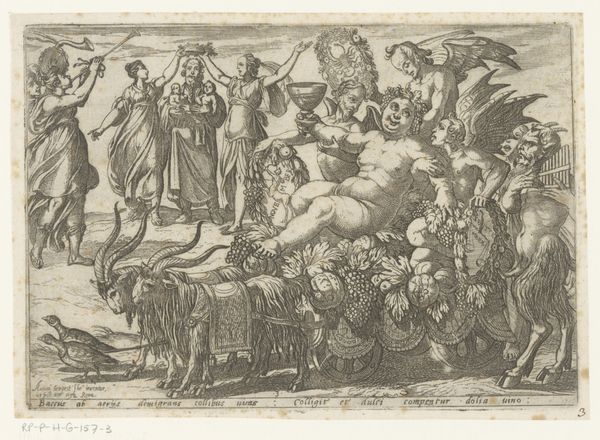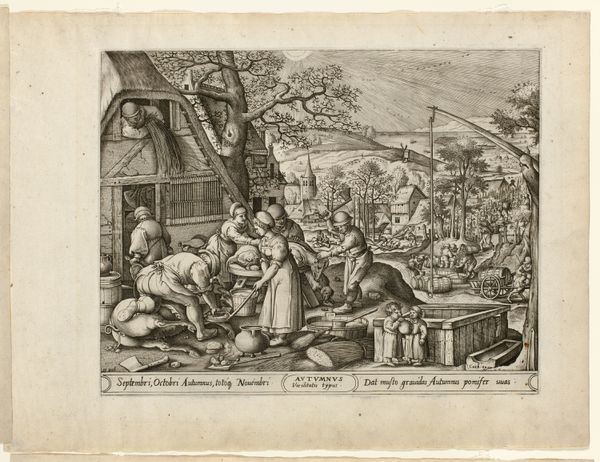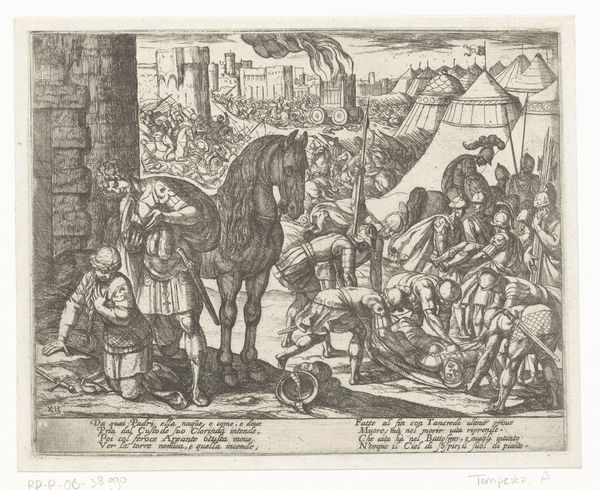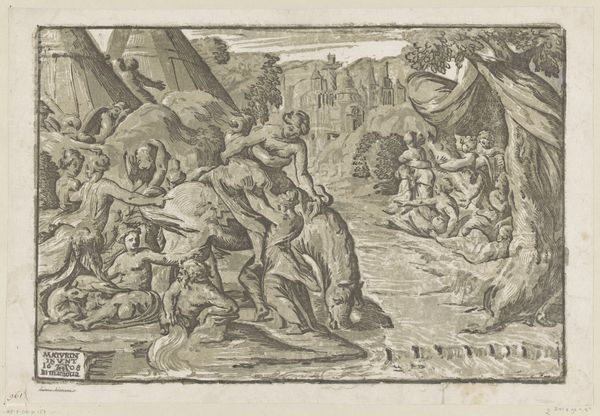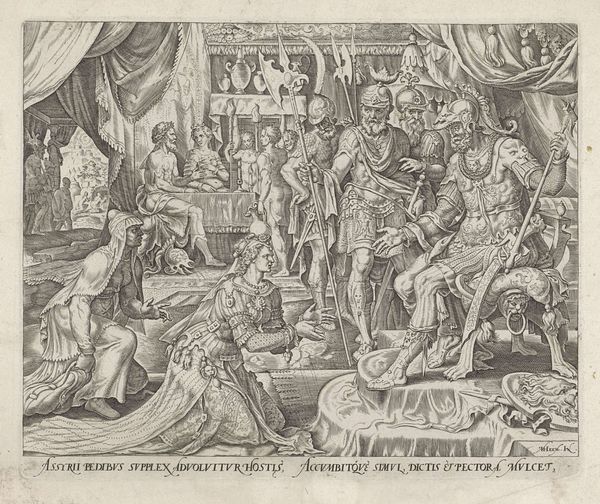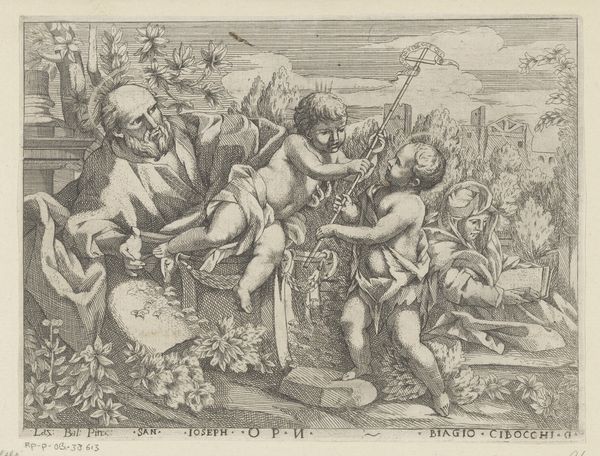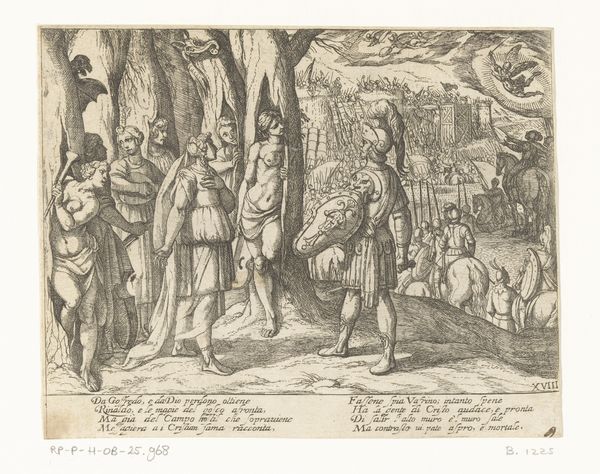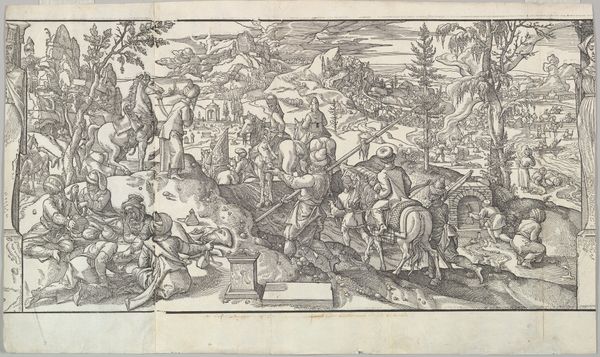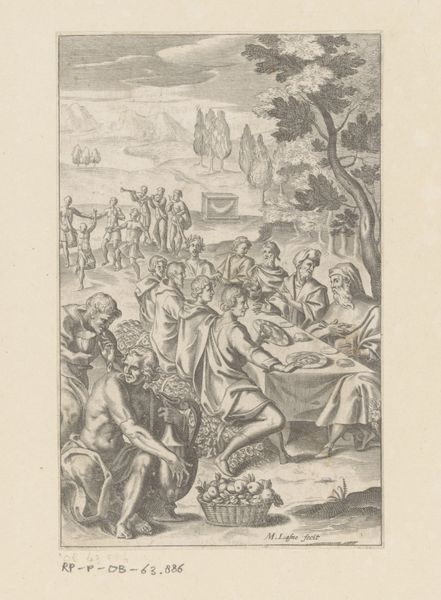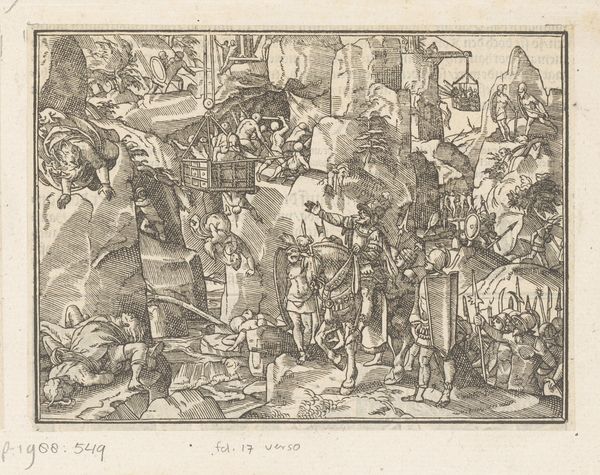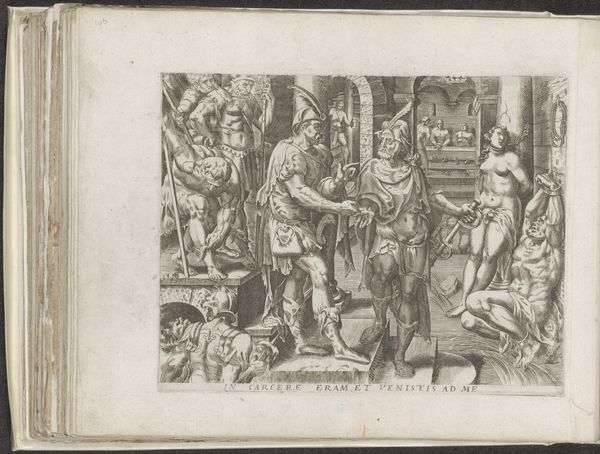
engraving
#
allegory
#
baroque
#
old engraving style
#
cityscape
#
history-painting
#
engraving
Dimensions: height 120 mm, width 194 mm
Copyright: Rijks Museum: Open Domain
Curator: Here we have a closer look at the “Allegory of the Dutch East India Company," an engraving created around 1728 by Philip van Gunst, now held at the Rijksmuseum. Editor: What a fascinating jumble! So many figures vying for attention. I get this immediate sense of overloaded prosperity—and, well, perhaps a little moral ambiguity in the mix. Curator: Precisely! The Baroque style lends itself to such dramatic compositions, doesn’t it? We observe a dense arrangement of allegorical figures set against a detailed cityscape, likely Batavia. Justice with her scales stands prominently, yet her position feels almost precarious amongst the surrounding entities. Editor: Precarious is a great word for it. The detail is astonishing, from the ships in the background to the textures of cloth and skin of the figures. But, honestly, there's also a feeling of propaganda to this, don't you think? A company showing off its supposed benefits but the cost, for some, probably outweighs it? Curator: It is certainly an idealized portrayal of the VOC's influence. Consider the native figures offering gifts—a symbolic acknowledgment of the East's submission to Dutch trade power, depicted in very westernized bodies. The shield with the VOC logo reinforces its authority. However, the inclusion of Chronos—Father Time—leaning on a plaque inscribed "1602" could be interpreted in various ways: perhaps signifying enduring power, but also mortality. Editor: And the figure draped on boxes near the bottom left – overwhelmed by the cargo? This speaks to labor or some other more grim element… Curator: Possibly. We see those sorts of details throughout the engraving. It reflects a common artistic tension during that era. Highlighting progress and colonial ambitions with classical forms while being underpinned by the actual realities of those dynamics, but never displayed as realistically. Editor: It’s amazing to think how an image, produced with such particular intent, can open itself up for entirely new lines of questioning. Looking at this today brings to mind some serious reassessments and recontextualizations, no? Curator: Undoubtedly. By closely studying composition and iconography, we see these visual artifacts allow us to consider both the intended messaging and deeper socio-political ramifications within them. Editor: Indeed, images like these really do echo through history.
Comments
No comments
Be the first to comment and join the conversation on the ultimate creative platform.
